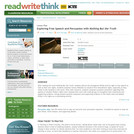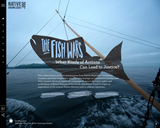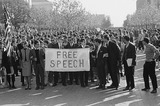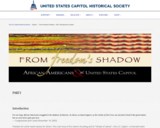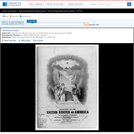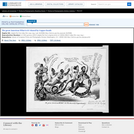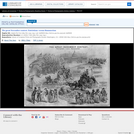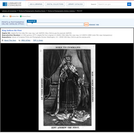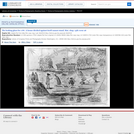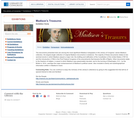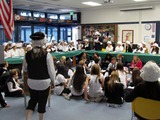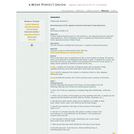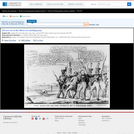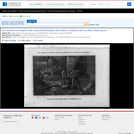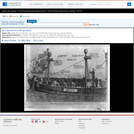
An anti-Jackson satire, critical of the President's federal treasury policy and of Vice-President Van Buren's influence on the administration's fiscal program. The print specifically attacks Jackson's plan to discontinue federal deposits in the Bank of the United States, and his "experiment" of placing them in selected state banks instead. The artist employs the image of a ship, a contemporary symbol of commerce, to forecast the ruination of American trade as a result of these measures. Jackson stands on a platform near the stern of the ship "Experiment," wielding a whip over eight crewmen who sit at spinning wheels. The ship is moored and upturned barrels sit on top of each of its three masts. A broom is tied to the foremost one, indicating that it is for sale. Rats scurry about the deck. Martin Van Buren stands behind Jackson near a padlocked door to the hold marked "Deposits" and "No Bank." A second ship burns in the distance. The various sailors comment: "Shiver my timbers Bob, if we ain't overrun with these blasted "Rats --" they eat up all our rations! I wish old Veto there, would drive 'em all overboard with little Martin at the head of them." "I say Jack I'm damn'd if this is like getting fifteen dollars a month is it?" "No, No, Shipmate, curse these spinning Jennies, its work only fit for lubbers and old women." "There is the old Constitution burning up! Her owners having no further occasion for her and cant afford to keep her in repair!" "Well what's the use of a Ship war? She's meant to protect "Commerce," but we've got none to protect!" Jackson: "No grumbling you lazy dogs! Perish commerce! perish trade! Andrew Jackson knows what's best for the Country, By the Eternal, Don't I Martin?" Van Buren: "To be sure you do if you mind what I tell you - Don't give up the ship General or I shall not succeed you!"|New York. Published by Anthony Imbert No 104 Broadway. |Title appears as it is written on the item.|Weitenkampf, p. 30.|Forms part of: American cartoon print filing series (Library of Congress)|Published in: American political prints, 1766-1876 / Bernard F. Reilly. Boston : G.K. Hall, 1991, entry 1833-8.
- Subject:
- History
- U.S. History
- Material Type:
- Diagram/Illustration
- Primary Source
- Provider:
- Library of Congress
- Provider Set:
- Library of Congress - Cartoons 1766-1876
- Date Added:
- 06/08/2013
